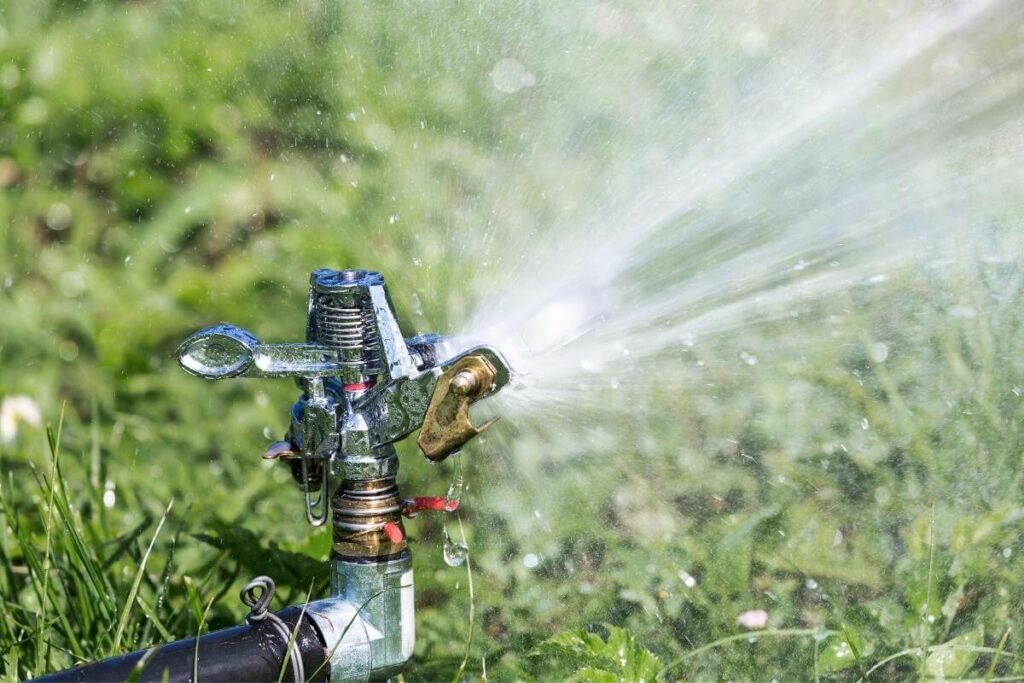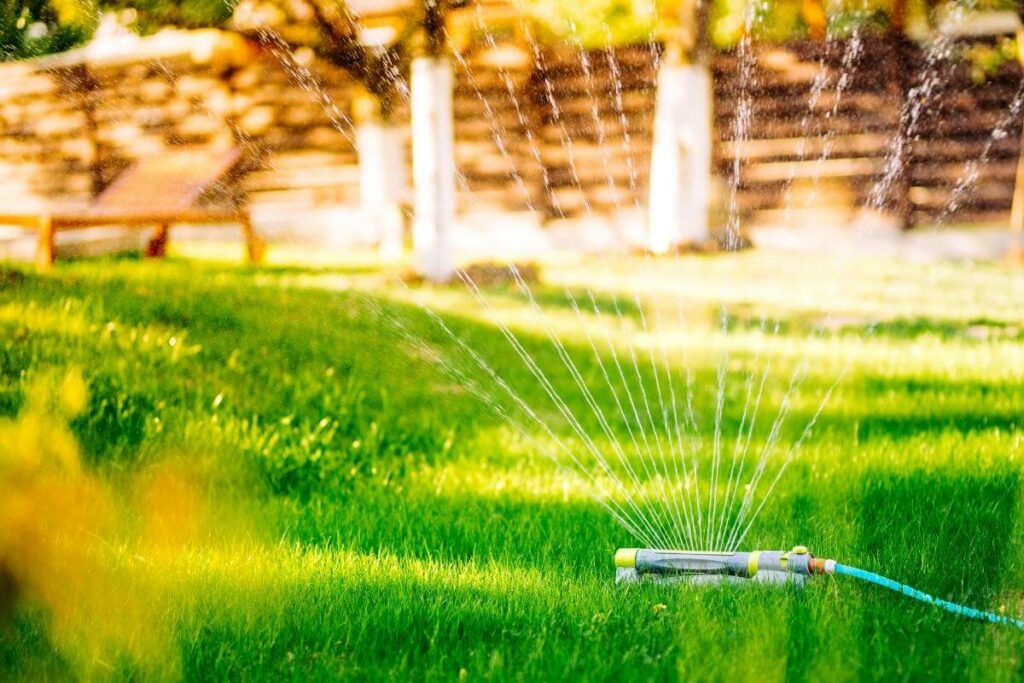Are you looking at all those lovely photos of beautifully groomed lawns on the web and wondering if your lawn is ever going to look that way?
Well, luckily, having such a nice yard is feasible; you just need to figure out the proper way to water grass seeds so that they get the right amount of hydration needed for their growth.
In this article, we’ll discuss everything you need to know about watering grass seeds, from how often you should water them to the important factors that affect their watering.
So, keep on reading if you want to learn all about watering your lawn and seeds to make your grass grow properly!
When Should You Water Your Grass Seed?
Right after you’ve planted the grass seed, it’s recommended to water your lawn every day, but only with a small amount of water. You can start with two to three times a day, watering it for about ten minutes. Be sure to keep in mind that the top two inches of the soil are supposed to be moist at all times.
Once your seeds sprout, water them once a day for a longer period than you were initially watering them.

The grass that is one inch tall requires less watering than the seeds because, at this stage, we’re waiting for the grass to form deeper roots – a process that doesn’t require an excessive amount of hydration.
Additionally: You should consider the type of lawn you have, namely, whether you’re trying to overseed an existing lawn or planting grass for a new lawn.
Type of Lawn
If you’re overseeding an existing lawn, the proper watering schedule for the grass seed is twice a day for fifteen to twenty minutes.
It’s important to water heavily to wash seeds down the cuts in the soil.
On the other hand, if you’re watering a new lawn where you just sowed your grass seed, you should be careful not to overwater them.
Ideally, you should water them for about two to six minutes. The process should be repeated two to three times each day to show your lawn love.
Also, it’s worth mentioning how critical the amount of water is when watering your newly grown grass. Both too much water and too little water can be damaging to your grass seed. Make sure to follow this to have your grass grow and not die out on you.
Overwatering your lawn can drown the seeds or wash them away. On the other hand, not enough water, of course, may kill the sprout. So how often, then?
You should try to keep the ground moist at all times, watering your lawn on a fixed schedule and, in that way, making sure that the seeds are adequately hydrated.
It’s best to set up a short-term routine during this time.
Factors Affecting Watering Grass Seeds
Watering grass seed is pretty much the same for each newly planted grass, regardless of the grass type, so there’s no need to worry about this aspect.

However, you should keep in mind certain factors that would affect watering your grass, such as the time of the day and weather conditions.
So, let’s have a look at them.
Watering Schedule
As for the time of the day, it’s best to water your lawn early in the morning and in the afternoon, a few hours before sunset.
In this way, you can avoid wind that could potentially blow the water away. However, if it’s summer or you live in a region where the temperatures get extremely high, the best way to prevent evaporation is by avoiding watering at noon.
On top of that, when you water grass seed in the afternoon, you allow enough time to pass before the sunset so that the soil isn’t moist throughout the night, which could result in fungal infections and mold.
Have You Noticed: If you see moss or similar growths in the gaps between your grass, it’s a sign that the soil is too moist. If this happens, you can reduce the watering frequency and the amount of water you use.
Weather Conditions
Another important factor of your lawn is the weather.
Weather determines the need to water your grass seed or not.
For example, if it’s rainy, of course, there is no need to water your seeds as much as you need to during sunny days when the soil is dry.
Furthermore, if it’s windy, the water that you use for watering the soil may not soak in properly.
Extra Water Tips
When watering grass seed, you have to know some tips that would help you water your newly grown grass effectively.
How to Water Grass Seed?
When hand watering, you want to try to imitate the rainfall, with the water flowing from above the seed, not at an angle, so you can avoid washing the seed away.
Type of Sprinkler
The type of sprinklers depends on the size of your lawn, the shape of the area, soil type, water usage, season, and budget.

So, if you have a large lawn, you may want to consider investing in a rotating sprinkler system that would operate on a watering schedule for proper lawn care.
For a medium-sized lawn, you can opt for an oscillating sprinkler, which will really help the grasses grow.
Your Choice: Also, don’t hesitate to spend some extra cash on a sprinkler, as it will ensure an even distribution of water. But don’t worry; it’ll pay off in the long run, and it’s definitely easier than hand-watering your seed.
Cover The Seed with Mulch
Scatter a thin layer of mulch on top of your newly planted grass seed.
This will help keep the moisture until the next watering session.
However, there’s an exception here: When overseeding an old lawn, covering your seeds with mulch isn’t necessary since the old grass already holds the moisture.
Last Words
That being said, we hope that you have a better idea of how to properly water your grass seed to keep your newly grown grass nice and lush. As your grass does grow inches high, it may appear a lighter green color as it is newer grass, depending on the type of grass seed you have purchased for your lawn.
Also, keep in mind that overwatering the soil isn’t a good idea, even if you feel like it’s a good one. Areas of lawns can only hold so much moisture. Increasing the water depth by adding too much will hinder your grass, and it may no longer grow.
So, make sure to know all the information about weather conditions, the timing of the day, and the type of lawn, and you’ll have hassle-free, properly watered seeds.
Also Useful
- Is it Worth Paying for Lawn Care?
- Is Lawn Care the Same as Landscaping?
- How to Improve Grass on Clay Soil in 4 Easy Ways
